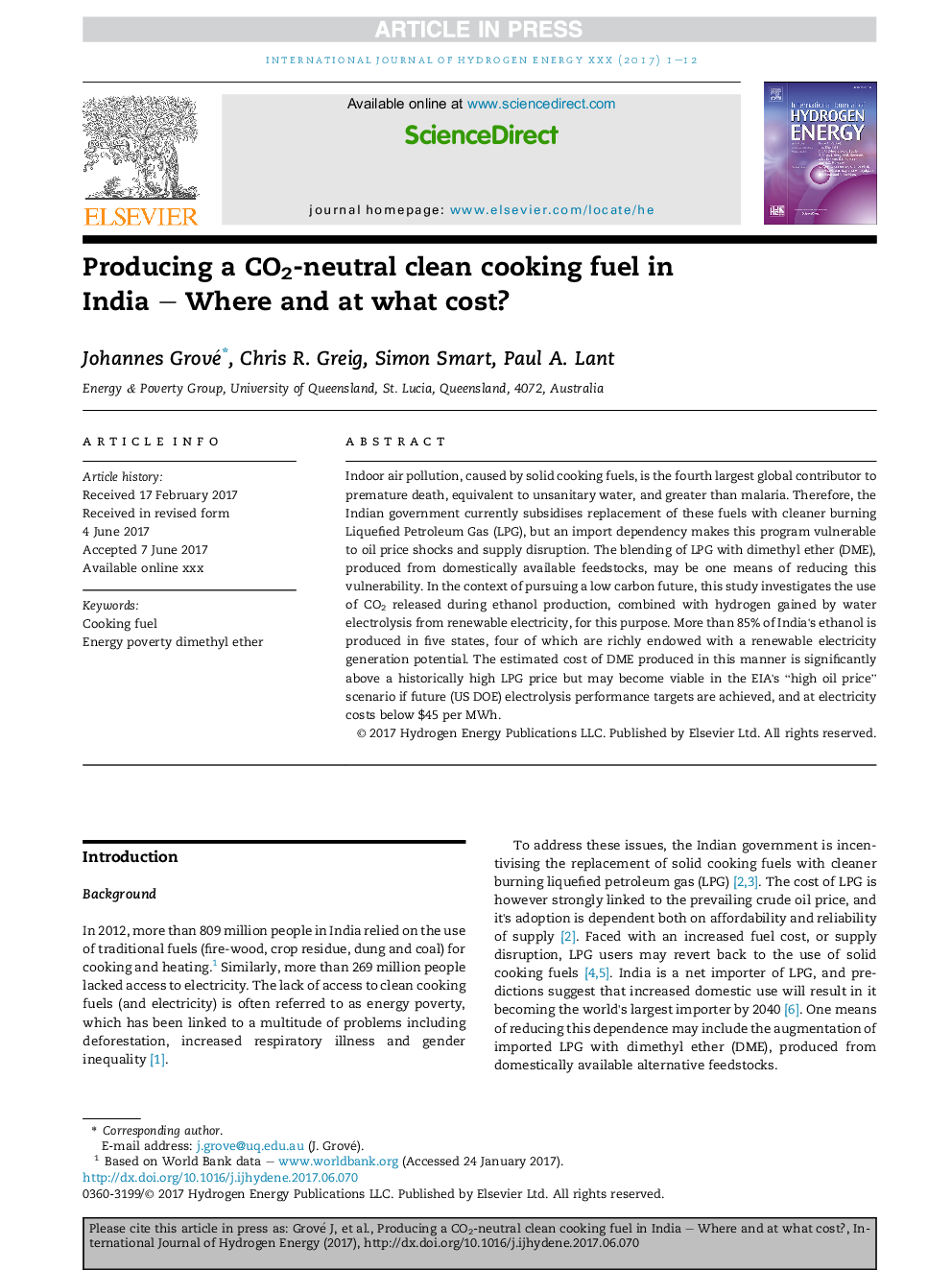| Article ID | Journal | Published Year | Pages | File Type |
|---|---|---|---|---|
| 5147037 | International Journal of Hydrogen Energy | 2017 | 12 Pages |
Abstract
Indoor air pollution, caused by solid cooking fuels, is the fourth largest global contributor to premature death, equivalent to unsanitary water, and greater than malaria. Therefore, the Indian government currently subsidises replacement of these fuels with cleaner burning Liquefied Petroleum Gas (LPG), but an import dependency makes this program vulnerable to oil price shocks and supply disruption. The blending of LPG with dimethyl ether (DME), produced from domestically available feedstocks, may be one means of reducing this vulnerability. In the context of pursuing a low carbon future, this study investigates the use of CO2 released during ethanol production, combined with hydrogen gained by water electrolysis from renewable electricity, for this purpose. More than 85% of India's ethanol is produced in five states, four of which are richly endowed with a renewable electricity generation potential. The estimated cost of DME produced in this manner is significantly above a historically high LPG price but may become viable in the EIA's “high oil price” scenario if future (US DOE) electrolysis performance targets are achieved, and at electricity costs below $45 per MWh.
Keywords
Related Topics
Physical Sciences and Engineering
Chemistry
Electrochemistry
Authors
Johannes Grové, Chris R. Greig, Simon Smart, Paul A. Lant,
